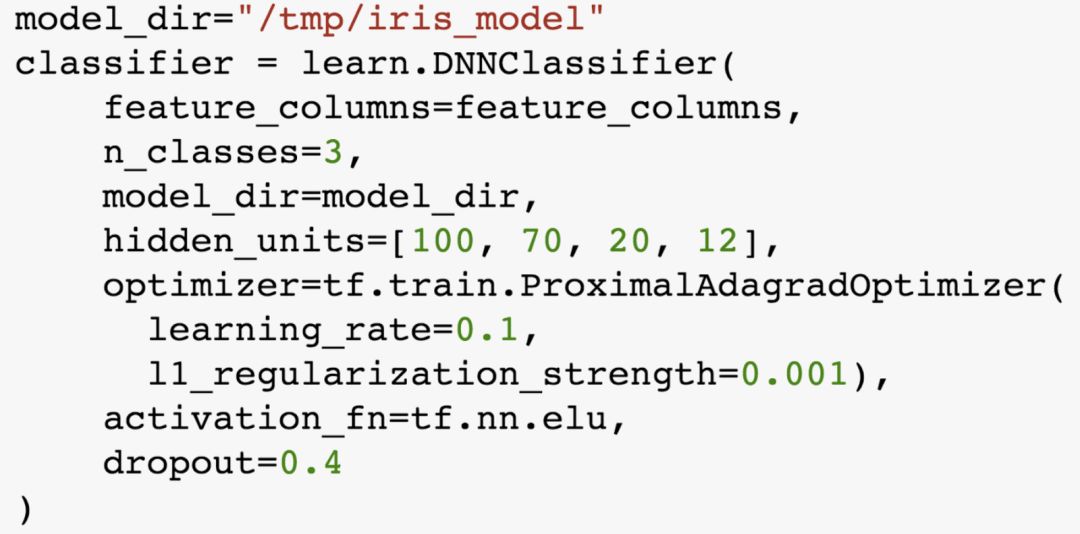The AIA (AI Adventures) series has now entered the sixth period. In the previous sessions, Yufeng introduced the core concepts and basic logic of machine learning, and also introduced the steps that need to be taken to carry out machine learning. Based on these basic knowledge, he tried to use the linear evaluator API to create an Iris flower classification model. How to visualize the model with TensorBoard. In today's sharing, he will lead us together to convert the linear iris classification model into a deep neural network structure.
In this issue of Cloud AI Adventures, we will learn how to replace linear models with deep neural networks to accommodate increasingly complex data set training tasks.
As the number of feature columns in a linear model increases, the relationship between the feature columns becomes more and more complex, and it becomes increasingly difficult to improve the accuracy in training. This is a well-known issue, and an effective way for data scientists to solve it is to use deep neural networks.
Why is it called depth?
Deep neural networks can deal with more complex data sets, and make full use of its multi-layer structure to better summarize unknown data, so it is called "depth." The multi-level structure allows it to accommodate more data than the linear model. However, the cost is to spend longer training time, and the model is also larger and interpretable. Why do people still like it so much? Because it can often be improved to higher accuracy.

Deep learning, like a forest walk, hard to find
One of the tricky things about deep learning is to adjust all the parameters to be “just rightâ€. The large data set size determines that the tuning process is almost endless. However, the TenClassorFlow built-in DeepClassifier and Regresser classes provide some default values ​​that you can use at any time. They can make your training preparation quick and easy.
From linear training to deep learning
Here is an example to show how to convert our previous model of linear iris identification to a deep neural network (also known as DNN).
Of course, we are not trying to show the 2,000-row eigenvalue model that the DNN can handle, but just use the series of four eigenvalues ​​throughout the series. (Either the firepower is fully on, or hardly used, hahaha) In fact, the principle behind them is the same.
The main change is to replace the LinearClassifier class with the DNNClassifier class. This change will create a deep neural network for us.

Replace the LinearClassifier Class with the DNNClassifier Class
Other changes
In fact, there is almost no change in other parts! Just DNN had more parameters that we didn't use before. Due to the multi-layer structure of the DNN, each layer may have a different number of nodes, so you need to add the hidden_units parameter when instantiating.

Combined with the hidden_units parameter to integrate everything
This hidden_units parameter allows you to specify a specific number of nodes for each layer of the model. This allows you to determine the size and shape of the model without having to manually connect everything from scratch.

Change the parameter configuration of the model is also a line change thing
more options
For any foreseen system, customization and convenience are often not available, DNNClassifier tries to provide developers with additional parameters to bypass this limitation. If it is left blank, it will be filled by some reasonable default value. For example, optimizer, activation function, elimination rate and so on are all customizable.

Yes, there is such an activation function called "ELU"
Nothing else changed
Are there other things to change? Gone! This is the advantage of using the Estimators framework: Organize data, train, evaluate, and export models in a common way, while also allowing you to train with different models and parameters.
Learn about the Estimators framework:
Https://tensorflow.google.com/api_docs/python/tf/estimator
Easily enter deep learning
Again, deep neural networks are more efficient than linear models. In these cases, TensorFlow uses a small amount of code to "replace only one function call." This can switch the model types and make everything easier. After that, you will have more time and energy to deal with data, models, and parameters, rather than loop iterations of time-consuming management training. Use the TensorFlow Estimators for a more relaxed DNN training experience!
Easy Electronic Technology is the leading supplier of 6gpu 8gpu 12gpu chassis supplier and factory
Best Efficient Mining Rig with Stronger Frame, Quiet Working,
Package includes
1x 8 GPU Mining chassis rig machine
1x 8 Port Motherboard
1x Intel CPU
1x 64GB mSATA SSD
1x 4GB DDR3L SODIMM RAM Module (upgradeable to 16GB)
4x 120MM High Flow Fans
1x 1800W Power Supply(1800W\2000W\2500W Optional)
1x ATX Power Cable
1x Windows 10 mining rig system installation
Applicable mining:
ETH/ETC/AE/BTM/GRIN/GRIN31/BEAM/SERO/RVN/MONA/CKB/XVG/BCD/FIRO/HYC/VTC/CLO/RVC/PGN/CHI etc.
mining rigs for sale,best miner for ethereum,gpu mining rig for sale,ethereum mining rig for sale
Easy Electronic Technology Co.,Ltd , https://www.yxpcelectronicgroups.com
